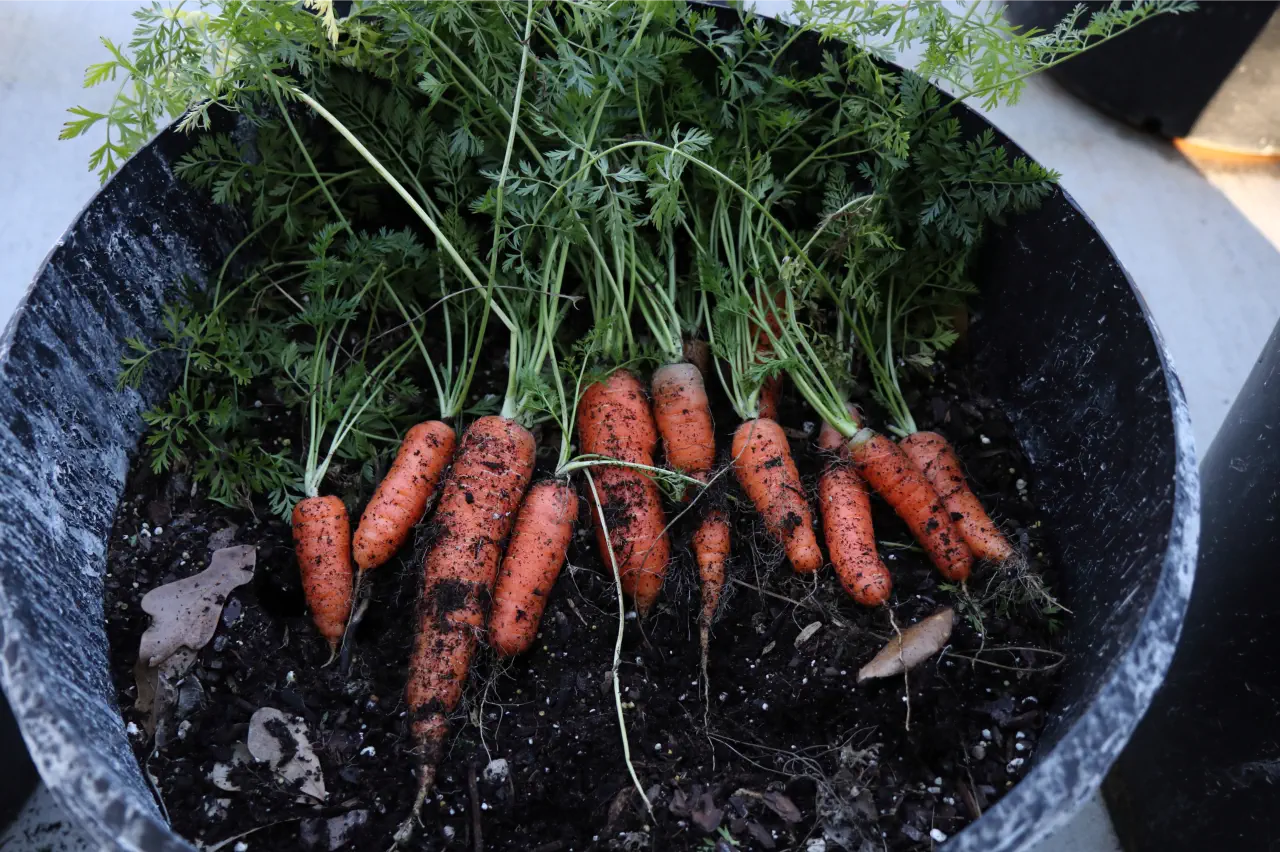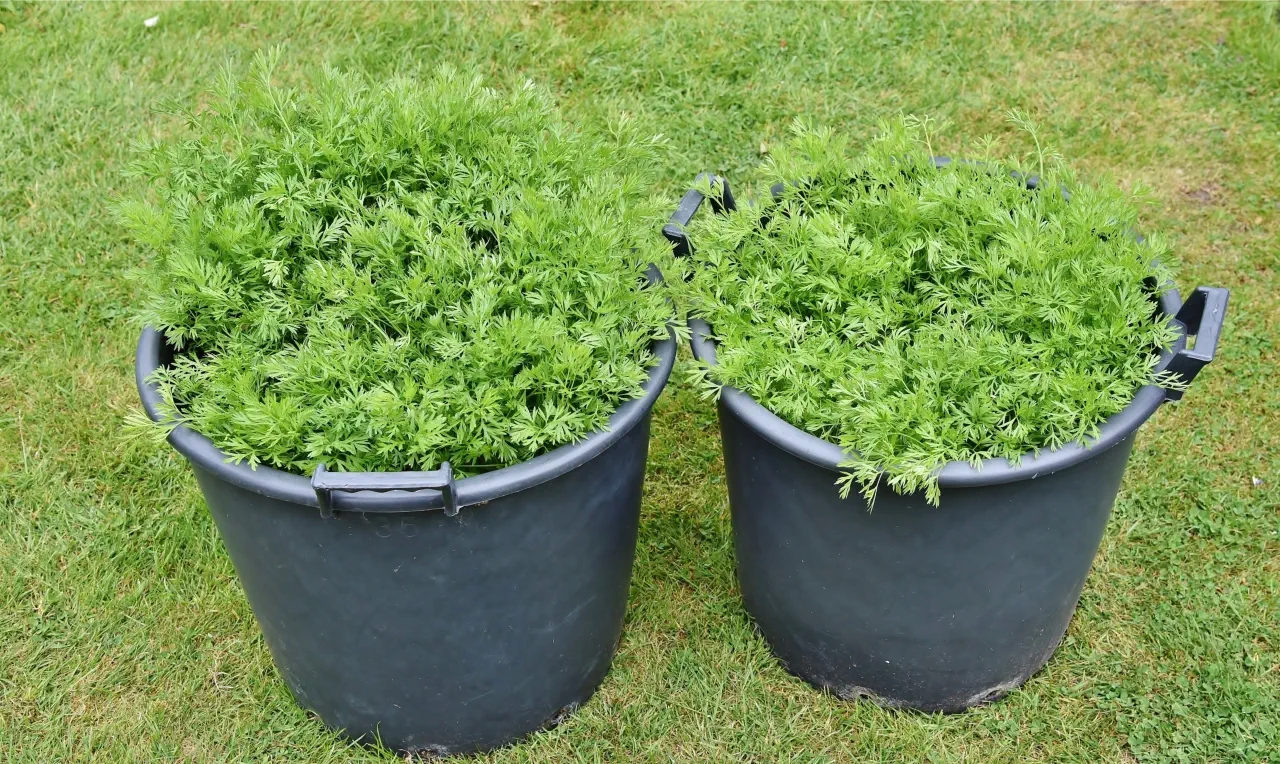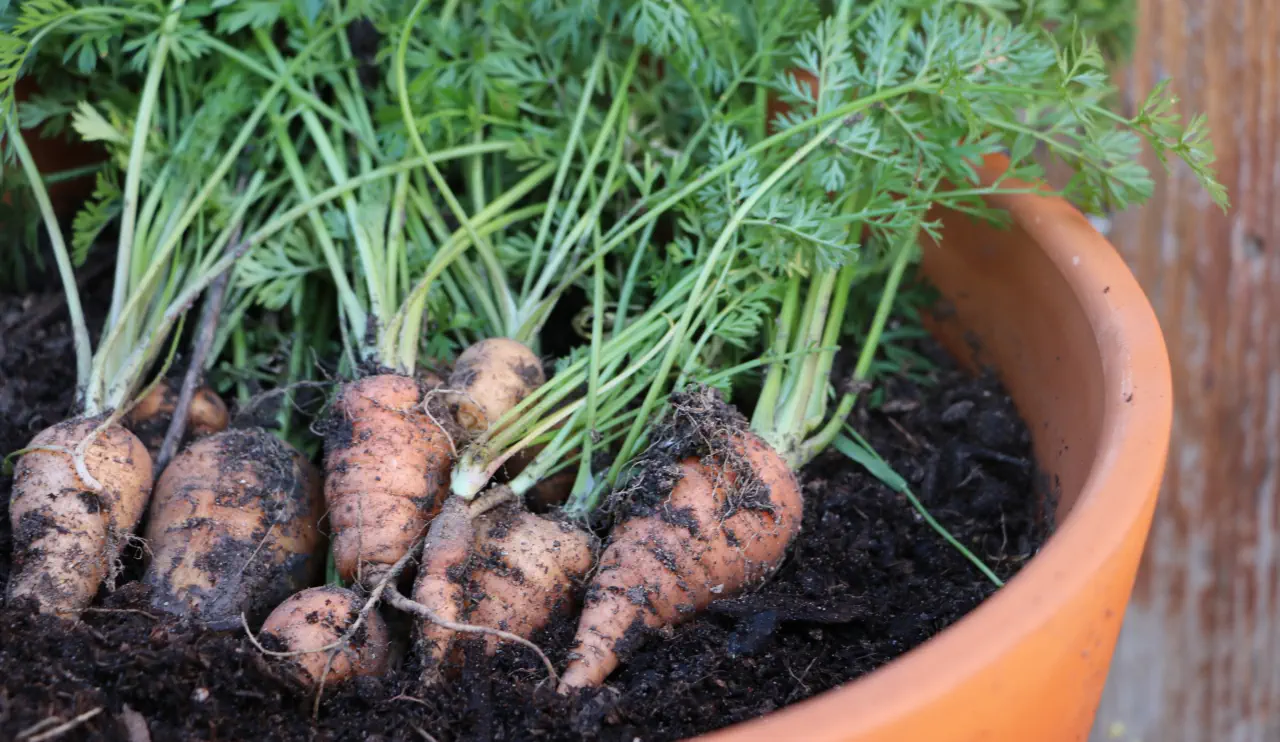March marks the official start of spring, bringing longer days, warming temperatures, and the perfect opportunity to get your garden ready for the growing season.
Here’s a comprehensive list of key gardening tasks to tackle this month....

Are you thinking about growing your own crunchy sweet carrots, but only have a small garden? Then this guide is for you... read on to learn more on growing carrots in pots and containers. Discover the secrets to choosing the right container, perfecting your soil mix, and the basic care steps that lead to a satisfying and flavourful harvest, whether grown on a back garden or a balcony.
To begin with, selecting an appropriate container for your carrot patch is a important step. The key to successful container grown carrots lies in the depth of the pot. A minimum of 30cm of depth is necessary to accommodate the full growth of carrot roots, and don’t forget the drainage holes to prevent waterlogging.
The material of your container can vary. From plastic to clay, or even upcycled builders buckets, the material doesn’t matter as much as depth and drainage capabilities.
A common question could be, “Is the same pot depth suitable for all carrot types?” The answer is no. Depending on the carrot types you choose, the pot depth may vary. Rounded root types are comfortable in pots at least 30cm deep, while longer rooting varieties require pots at least 45cm deep for root growth. Even if you aim to harvest young, long-rooted varieties, they still need the recommended 45cm depth.
Material Matters: Pros and Cons
Each container material presents unique advantages and disadvantages. Porous materials like clay pots require more frequent watering due to their higher permeability that affects soil moisture retention. However, as long as your container offers sufficient depth and proper drainage, plastic, clay, and fabric pots are all well-suited for growing carrots.
Ultimately, the health and success of your carrots hinge more on proper drainage than the specific material of the container.
After selecting your container, the subsequent step involves preparing an ideal soil mix for your carrots. A well-balanced mix comprises 2/3 potting soil and 1/3 compost, ensuring a light, fertile environment for root development. Enhancing this mix with coco coir, or composted bark can boost organic matter, supporting carrot growth.
But don’t forget about drainage! Incorporate plenty of coarse sand or perlite into the soil mix to prevent dense, heavy soil that can deform growing carrot roots.
Enriching your soil mix with nutrients is a vital step towards successful carrot growth. Bone meal, an organic fertilizer, is particularly beneficial for growing root crops like carrots in containers. Just a small measure of bone meal can significantly enhance phosphorus availability, aiding in strong root formation. However, remember to use bone meal in small amounts tailored to the needs of your carrot plants and pot size.
This way, you can achieve healthy carrot growth without excess nitrogen, which can promote foliage at the expense of roots.
Autumn King is a heritage variety known for its large, deep orange roots that grow up to 30cm long.
This maincrop carrot is highly productive, sweet-flavoured, and stores well, often lasting through winter when left in the ground. It resists greening and splitting, making it a reliable choice for home gardeners....
Chatenay Red Core is regaining popularity due to its exceptionally.....
Av. Packet Contents : 500 seeds
F1 Hybrid second early Nantes type ideal for harvesting.....
Av. Packet Contents : 500 seeds
Paris Market Atlas is ideal for shallow soils or containers.....
Av. Packet Contents : 700 seeds
Flyaway has good tolerance of Carrot Root Fly.....
Av. Packet Contents : 500 seeds
Resistafly is a hybrid nantes type with good tolerance of Carrot.....
Av. Packet Contents : 500 seeds
With your soil mix prepared, the next phase involves sowing your carrot seeds. When sowing, follow these steps:
Create shallow holes about 1 cm deep.
Space the holes about 5-7 cm apart.
In each hole, place three carrot seeds, ensuring the quality of each carrot seed.
Cover the seeds with soil.
This method ensures a good chance for successful germination, provides enough space for growth, and avoids overcrowding, which can lead to competition for resources.
Take care not to sow too deeply or inconsistently, as this can lead to failure of the seeds to sprout from the seed packet.
Timing is another key element to consider. Carrot seeds are typically sown from early spring until mid-summer, but if you’re growing indoors or in a climate-controlled environment, you can sow year-round. If you’re in the UK, the main outdoor sowing season runs from April to early July, and planting every three to four weeks can result in a continuous carrot harvest.
After sowing your seeds, the work doesn’t stop there! Essential care for container growing carrots requires:
Full sun
Consistent soil moisture
Regular watering, with the soil being kept damp but not soaked, typically once or twice a week
During extended dry periods, ensure you thoroughly water your carrots to provide them sufficient hydration.
You might find that your container-grown carrots need to be watered more regularly than those in garden soil, especially during hot and dry spells. Inconsistent moisture levels can lead to splitting of carrots and a loss of flavour, making them difficult to peel.
Mulching materials like straw, shredded leaves, or grass clippings can be beneficial in retaining soil moisture and preventing temperature fluctuations that might cause splitting in your carrots.
Alongside watering, regular feeding of your carrots is also necessary. It’s recommended to fertilise every 3 to 4 weeks with a liquid vegetable fertiliser or compost tea. However, use general-purpose fertilisers sparingly to support growth without overemphasizing foliage at the expense of root development.
High nitrogen fertilisers should be avoided as they can encourage leafy growth but result in smaller, forked, or hairy roots.

The carrot fly, also known as the carrot root fly, poses a significant threat to carrot crops. But don’t worry, there are various deterrent and protective methods available. Using physical barriers such as horticultural fleece, fine mesh, or polythene, placed around or over the carrot containers, can effectively block carrot flies.
Planting strongly-scented companions like Rosemary, Alliums, Sage, or Marigold near carrot containers can serve as a natural deterrent and help not to attract carrot root fly.
After several weeks of conscientious care, it’s finally time to enjoy the fruit of your labor. Carrots are generally ready to harvest about 12–16 weeks after sowing, though exact timing can depend on the variety and the weather. The maturity of container-grown carrots can be checked by observing the size and color of the top portion of the carrot or by gently pulling one as a test.

Post-harvest, you might have a plentiful stock of carrots. To store your carrots, you’ll want to:
Maintain temperatures between 32–38°F (0–3°C)
Maintain a relative humidity of 98%
Store mature carrots with minimal damage
Store them for several months under proper conditions
If you wish to prolong the harvest season of your homegrown carrots due to your enjoyment, there are methods to achieve it. One way is to grow carrots using succession planting by sowing seeds every four weeks, which helps ensure a constant supply of carrots and makes harvesting carrots a regular activity.
Planting a combination of carrot varieties with different maturity dates results in a steady supply of carrots throughout the season, ensuring a successful carrot crop.
As with any gardening venture, container-grown carrots may present their unique challenges. Soil conditions that are not suitable for carrots, like heavy or poorly structured soil, can lead to misshapen and forked containers carrots.
Consistent watering is key to preventing drought stress, which may cause the carrot roots to fork or twist.
Yes, carrots grow well in pots, especially in containers with deep multi-purpose compost. They need full sun and regular watering to thrive. So, if you have limited space, growing carrots in containers can be a great option.
To grow carrots, you need a container with a minimum depth of 30cm and adequate spacing for the seedlings to fully develop. Follow the specific depth requirements for the variety of carrots you're growing.
You can plant carrots from the spring onwards. Carrot seeds can be sown from early spring right through to late August, and most varieties are sown outdoors between April and July.
You can harvest small carrots in under two months, while main crop carrots take around 14-16 weeks from sowing to maturity. Most carrot varieties are ready to harvest between 70 and 80 days after planting the seeds.
Carrots prefer a well-balanced soil mix with 2/3 potting soil and 1/3 compost for optimal root development.
All blog content on this page is copyright of SimplySeed and is not to be reproduced without prior written permission. ©